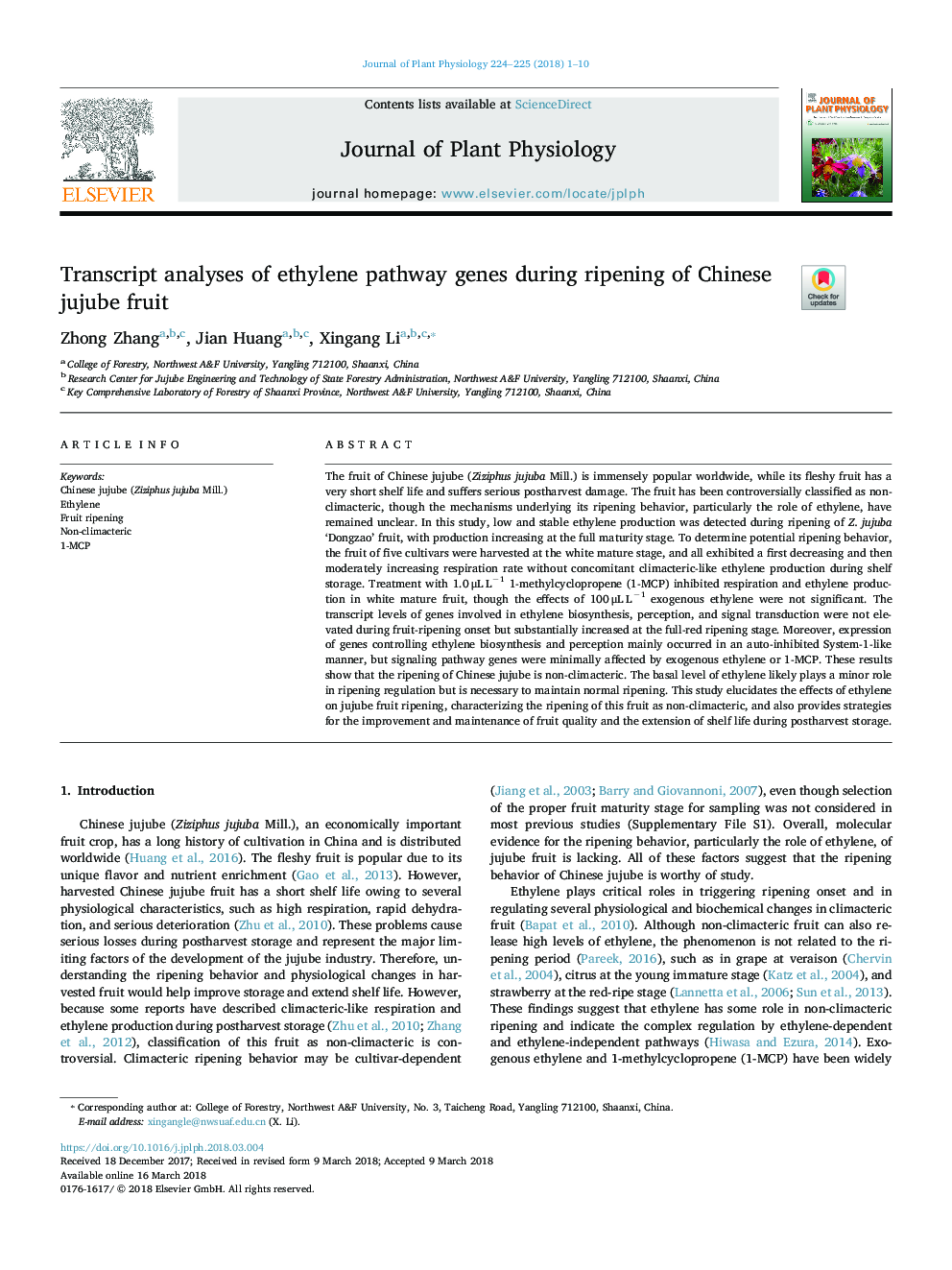| Article ID | Journal | Published Year | Pages | File Type |
|---|---|---|---|---|
| 8386836 | Journal of Plant Physiology | 2018 | 10 Pages |
Abstract
The fruit of Chinese jujube (Ziziphus jujuba Mill.) is immensely popular worldwide, while its fleshy fruit has a very short shelf life and suffers serious postharvest damage. The fruit has been controversially classified as non-climacteric, though the mechanisms underlying its ripening behavior, particularly the role of ethylene, have remained unclear. In this study, low and stable ethylene production was detected during ripening of Z. jujuba 'Dongzao' fruit, with production increasing at the full maturity stage. To determine potential ripening behavior, the fruit of five cultivars were harvested at the white mature stage, and all exhibited a first decreasing and then moderately increasing respiration rate without concomitant climacteric-like ethylene production during shelf storage. Treatment with 1.0â¯Î¼Lâ¯Lâ1 1-methylcyclopropene (1-MCP) inhibited respiration and ethylene production in white mature fruit, though the effects of 100â¯Î¼Lâ¯Lâ1 exogenous ethylene were not significant. The transcript levels of genes involved in ethylene biosynthesis, perception, and signal transduction were not elevated during fruit-ripening onset but substantially increased at the full-red ripening stage. Moreover, expression of genes controlling ethylene biosynthesis and perception mainly occurred in an auto-inhibited System-1-like manner, but signaling pathway genes were minimally affected by exogenous ethylene or 1-MCP. These results show that the ripening of Chinese jujube is non-climacteric. The basal level of ethylene likely plays a minor role in ripening regulation but is necessary to maintain normal ripening. This study elucidates the effects of ethylene on jujube fruit ripening, characterizing the ripening of this fruit as non-climacteric, and also provides strategies for the improvement and maintenance of fruit quality and the extension of shelf life during postharvest storage.
Related Topics
Life Sciences
Agricultural and Biological Sciences
Agronomy and Crop Science
Authors
Zhong Zhang, Jian Huang, Xingang Li,
